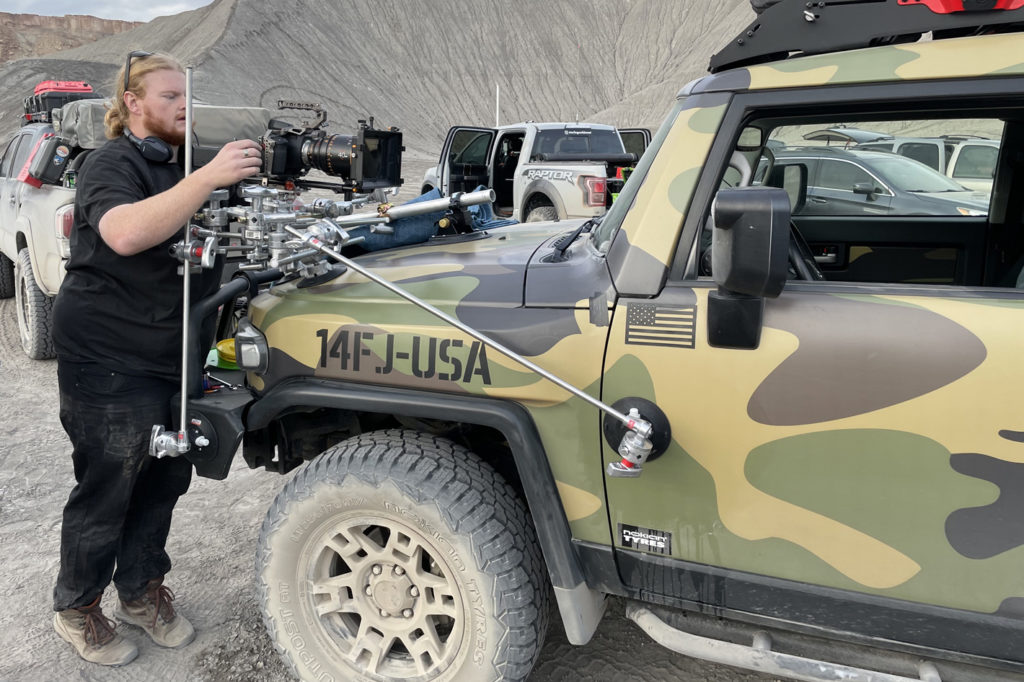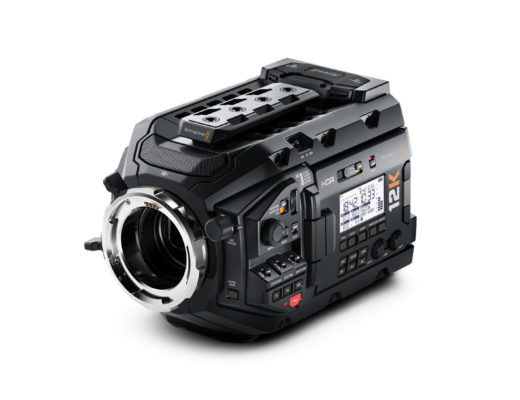 Frigid cold, extremely dusty and windy environments, snow, dirt, mud, nothing stopped the URSA Mini Pro 12K and other Blackmagic Design cameras from capturing the action in this new spot.
Frigid cold, extremely dusty and windy environments, snow, dirt, mud, nothing stopped the URSA Mini Pro 12K and other Blackmagic Design cameras from capturing the action in this new spot.
A new Nokian Tyres commercial shot, titled “Alive”, focus on how the tires are meant for extreme and high octane use in almost all environments. Leaving behind the paved roads, the crew had to shoot in a wide range of environmnents that pushed the limits for both humans and equipment. With Blackmagic Design cameras attached to vehicles as they sped over sand dunes, through mud and across snowy terrain.
“We shot across the state of Utah, all in vastly different, unique and challenging environments, capturing everything from Swing Arm City, which is a clay playground for off road motorsports, to the Uinta National Forest and Uinta Mountains during a snowstorm, and out near the Bonneville Salt Flats and Knolls Recreation Area for dirt and dune shots,” said DP Sam Sargeant. “These elements all pushed our limits in which ways we could shoot, but we just went for it and relied on the cameras to withstand the elements. They worked in the frigid cold, in extremely dusty and windy environments, in the snow, dirt, mud, on the car, in the car, and even underneath the car.”
These real-world uses are the best way companies have to show how their products work, and while Nokian Tyres got the spot it wanted, Blackmagic Design also used the experience to demonstrate how its cameras and software work. So, without further ado, here is a description, provided by Blackmagic Design, of how the shot was created using a range of Blackmagic Design cameras, including the Blackmagic URSA Mini Pro 12K digital film camera, to capture the action in, around and even underneath fast moving cars.
 URSA Mini Pro 12K as the A camera
URSA Mini Pro 12K as the A camera
To capture the action, Sargeant used an URSA Mini Pro 12K as the A camera primarily attached to the pursuit vehicle, with Blackmagic Pocket Cinema Camera 6K Pro and Blackmagic Pocket Cinema Camera 4K digital film cameras capturing shots inside the main vehicle, as well as rigged externally on the car from the tires up, and underneath tire level.
“Most automotive work focuses on one vehicle, or one set of tires, traversing the elements. With two vehicles in front of the camera, it was imperative to capture multiple angles simultaneously to save time. With our Blackmagic Design arsenal, we were able to meet this challenge head on,” explained Director Ashton Sterling Bingham. “The cameras were a game changer since we were able to pre rig each camera, allowing us to flawlessly move from station to station. We also had more peace of mind knowing we would be able to mix and match in post with greater ease.”
The Pocket Cinema Camera 6K Pro’s and Pocket Cinema Camera 4K’s miniaturized designs allowed Sargeant to easily utilize them for tight interior shots, as well as right next to the tires and underneath the vehicle, without having to sacrifice image quality. However, Sargeant credited Blackmagic RAW as being the most paramount to the shoot.
 Blackmagic RAW workflow in post
Blackmagic RAW workflow in post
“Blackmagic RAW with the 12K sensor was especially impressive as they were designed for each other,” explained Sargeant. “The URSA Mini Pro 12K’s sensor was a joy to work with, using equal amounts of red, green and blue pixels to bring an amazing color fidelity to the image that feels so natural. With Blackmagic RAW, we got the benefits of working with RAW without the need for mega processing power in post or filling up our storage space for media. It’s incredibly efficient, has multiple flavors and provides all of the control in post that we wanted. Just having confidence in how good Blackmagic RAW really is allowed me to push the image just a little bit further and just a little bit harder.”
Continuing the Blackmagic RAW workflow in post, Colorist Keyhan Bayegan used DaVinci Resolve Studio editing, grading, visual effects (VFX) and audio post production software, along with a DaVinci Resolve Mini Panel, relying on its collaboration tools to facilitate live grading sessions between himself in Los Angeles, CA, and Sargeant and Bingham in Utah. Bayegan also used DaVinci Resolve Studio’s Fusion page for beauty work and cleanups with 2D VFX and the Fairlight page to accurately marry sound and footage for creating master deliverables.
 Great gear facilitates great storytelling
Great gear facilitates great storytelling
“DaVinci Resolve Studio perfectly integrates color capabilities with editorial and VFX features,” said Bayegan. “In each step of a pipeline, we were able to define a set of parameters and expand our degrees of freedom, such as doing cleanups, conforming and VFX rotoscoping work, all the way to coloring and finishing. Starting from the edit, we were able to online and conform the project easily and recreate the editorial effects, such as burn ins and flashes, with their proper composite modes.”
“After we started by experimenting with different LUTs, I used warpers, log controls and some Resolve FX to build the look and lock it within a few minutes, so we could all focus on the creative aspects rather than the technical ones. We were live grading this project remotely, and Resolve’s versatility allowed me to dedicate most of our time to grading rather than matching and fixing problems,” Bayegan added.
“Great gear facilitates great storytelling,” Bingham concluded. “As a director, I want to give all my mental energy to what’s in front of the camera. The best tools are the ones I think about the least because they allow me to focus on what’s on the canvas and not what’s in my hands, which is exactly what the cameras and DaVinci Resolve Studio delivered.”

Filmtools
Filmmakers go-to destination for pre-production, production & post production equipment!
Shop Now













